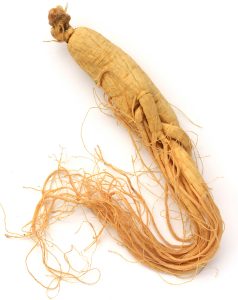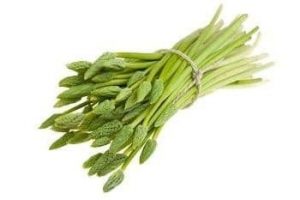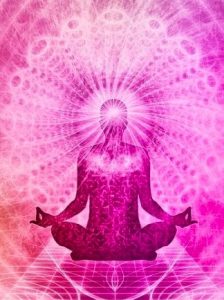Symptoms of erectile dysfunction (ED) include rare or weak erections in the morning or during sexual intercourse. Penile hardness may be difficult to achieve in a particular sex position or its achievement may require plenty of time. This condition brings anxiety and insecurity in the men’s lives, so they diligently seek efficient remedies. Some men prefer to use natural methods, solely or in combination with traditional treatment (Viagra, Cialis, etc.). Ayurvedic medicine has been existing for ages and is still popular now. Can it help to cope with erectile dysfunction?
What is Ayurveda and What Are Ayurvedic Remedies?
Ayurveda is a traditional system of Indian folk medicine and science of the art of healthy living. In Sanskrit, this term means ?The Science of Life.? It involves an integrated approach to healing a person. The triune therapy includes spiritual, mental and bodily aspects of life. According to the holistic principle of this ancient medicine, man represents an indivisible unity, and integrity. This means that the whole body should be treated, not its individual parts.
Indian Ginseng
Ashwagandha (Withania somnifera, also known as Indian ginseng) is an Ayurvedic miracle remedy. It is an evergreen shrub plant belonging to the family of Solanaceae, or nightshades, along with tomato, potato, eggplant, and chili pepper. After flowering, red berries with yellow hard seeds appear on the plant. In Ayurveda, fruits and leaves of the herb can be used, but the root has the main value (partly because of this, people called ashwagandha Indian ginseng).
Cinnamomum Cassia
This is an evergreen tree growing in China, which is also called Chinese cassia or Chinese cinnamon.
In traditional Chinese herbal medicine, supplements based on the bark of the Cinnamomum trunk are used for male erectile dysfunction, frigidity (inhibited sexual desire), chills, lower back and knee pain, and shortness of breath coexisting with the syndrome of renal failure.
However, one shouldn’t use large amounts of cassia. European health agencies warn against consumption of this plant in big dosages since it is rich in coumarin (C9H6O2), a blood-thinning substance.
Asparagus Racemosus (Shatavari)
 Some scientists have discovered the effectiveness of this plant, which consists in the stabilization of male reproductive function. This herb also improves blood circulation and has a positive effect on the nerves.
Some scientists have discovered the effectiveness of this plant, which consists in the stabilization of male reproductive function. This herb also improves blood circulation and has a positive effect on the nerves.
In Ayurvedic medicine, asparagus is considered an aphrodisiac, that is, a giver of love and devotion, which enhances libidinal characteristics. Plant extract is available as tincture and powder. However, it is not known exactly which dosage is suitable in case of erectile problems since there are no relevant clinical studies.
Vajikaran Therapy for ED Treatment ? Complex Remedies
Vajikarana (Vrishya chikitsa) is one of the branches of Ayurveda. There are 8 branches in total, including internal & external treatments (Kayachikitsa), healing of psychogenic problems (Graha chikitsa), etc. Vajikarana is concerned with aphrodisiacal remedies, virility and better health of progeny.
As reported by P.K. Dalal et al. (Indian CSM Medical University, 2013), there are cartloads of formulations used in Vajikaran for combating erectile problems. Some of commonly used preparations are:
- Vrihani Gutika. It is considered to have the highest potency. It comprises several dozens of ingredients, including Ikshu roots, Asperagus racemosus, aloe vera, pastes of Madhuca indika, Vitis vinifera, juice of Emblica officinale, and milk. Vrihani Gutika is sold in some Ayurvedic stores. Theoretically, this product can be prepared at home. The only problem: you need a lot of components, which are most likely unavailable in your region.
- Vrishya Gutika. It contains clarified butter, Pueraria tuberosa juice, sugar, honey, Bambusa erandinacia, Mucuna pruriens, Piper longum, and Saccharum officinarium.
- Vajikaranam Ghritam. This formulation contains Mucuna pruriens, Asperagus racemosus, Withania somnifera, Pueraria tuberosa, and some other natural aphrodisiacs.

Yoga for Preventing Erectile Dysfunction or Improving Its Symptoms
As we’ve mentioned, Ayurvedic concept implies complex treatment. Therefore, an ED sufferer should pay attention not only to nutrition and supplements but also to physical health.
Yoga is not just a complex of special physical exercises for strength, balance, agility, flexibility, and endurance. This is a whole philosophy, the life path of the soul and body, which allows you to strengthen your health.
The benefits of yoga primarily concern the body, since this ancient Indian practice has proven to increase flexibility, tone muscles, and revitalize all bodily systems. In addition, yoga has a positive effect on the cognitive abilities and psychological state of a person. That is, this practice can help to cope with both organic and psychogenic erectile dysfunction. If you are healthy enough to do yoga, you can start practicing it under the supervision of a qualified instructor.
Takeaways
Self-treatment with Ayurvedic medications can bring results but only in long-term perspective. In addition, precise dosages of the abovementioned herbs for ED treatment are unknown or insufficiently studied. So in many cases, traditional medicamentous therapy with PDE5 inhibitors is more helpful. The same goes for combating the underlying disease which has led to impotence. As for yoga, it is almost always a good choice which can be a great addition to the anti-ED therapy.


Leave a Reply